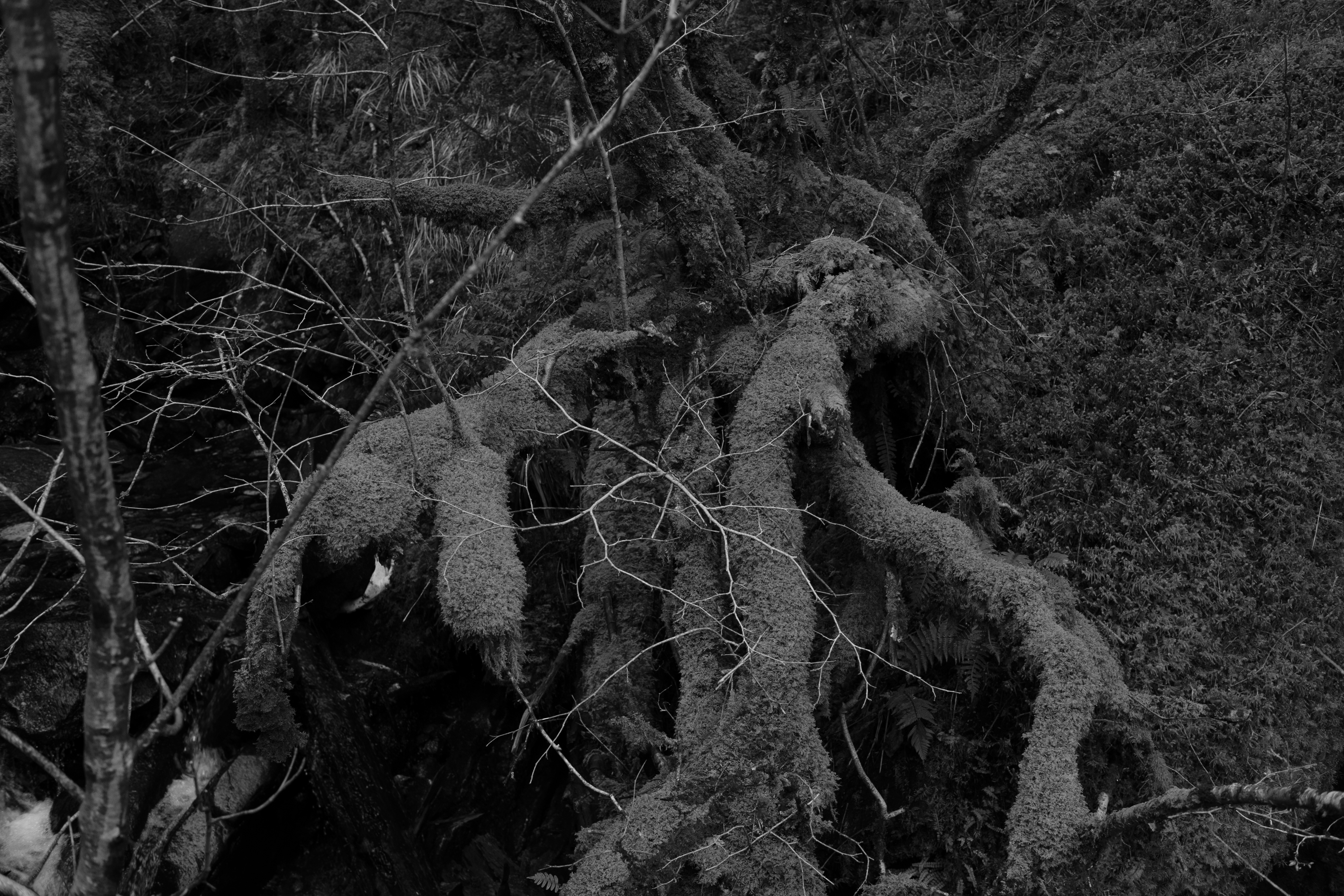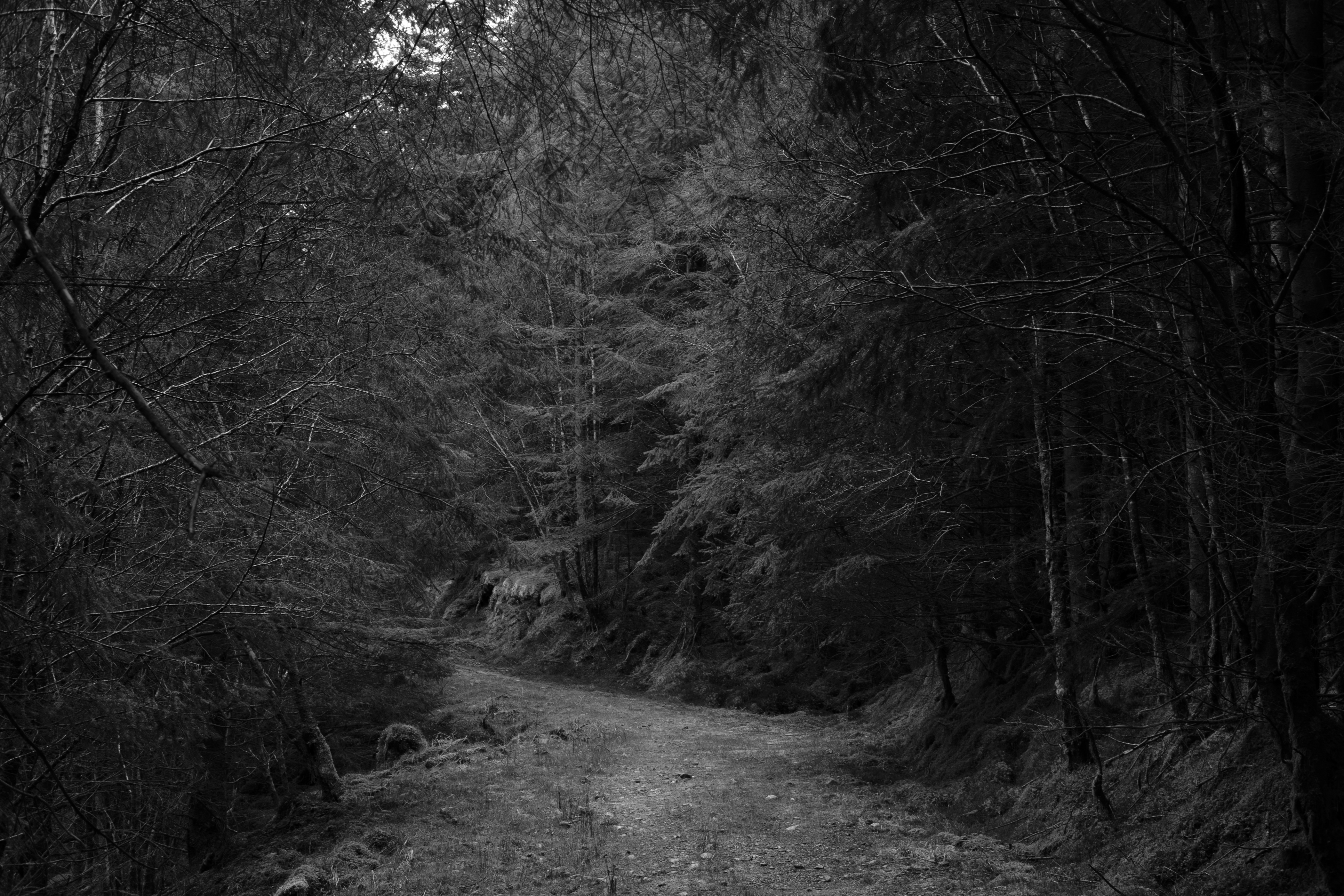Scotland
April, 2023
April, 2023
Experiencing the impacts of mono-culture forests with 'non-native' trees and the benefits of native tree reforesting of the Scottish Highlands.
"How does one grow native trees to plant a forest? And how long does it take to reforest?" are questions that go through my mind. I have come to know that these questions are hardly easy to answer. The answers depend heavily on the area you are asking the questions about and are relative to subjective ideas. For example, a politician might see four years as a short time period, while a tree nursery sees those four years as their livelihood, working through the elements to ensure the growth of their trees.
Scottish forests have a magical ambience, covered in mosses and lichen paired with a mist of moisture shimmering light in all directions. From the outside, most of the tree-covered space looks like it is full of almost magical life. However, you look closer and find forests full of 'non-native' Sitka spruce and Lodgepole pine. The more-than-human inhabitants find no nutrition or home in these forests, which is why these magical-looking forests quite often lack life.
Luckily, there is quite literally more than meets the human eye. Mosses and lichen grow in abundance in Scotland and are inspiring to research a little more. These algal-microbial-fungal-bacterial wonders love the moist climate in Scotland and thrive there. Often, the mosses and lichen house more life than any form of visible forest and have their own ecosystem that in turn helps the rest of the beings around them. We as humans might take great feelings of calmness and comfort from these forests, just to name one form of help these beings give us.
So, humanity needs to make sure to give space to the Earth's ecosystems and support other beings' habitats or simply leave them to do their thing.
Where do we go from here?
Good reads: Gathering Mosses, Entangled Life and Finding the Mother Tree



































